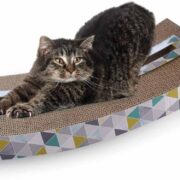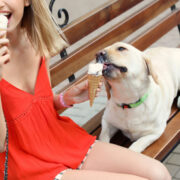With many of us opting to spend more time in our homes, it is the perfect time to foster or bring a new pup into your life. Not only will you have more time to get your new puppy settled in, but you can also try these commands to teach your new puppy. Grab the dog treat pouch and get ready for learning!
New puppies are full of surprises. From a mischievous glint in the eye, as they run off with your sock to waking you at 3 a.m. for a potty break, they turn your life upside down for a few weeks.
Yet, with a bit of training, they’ll soon settle into a routine. The good news is puppies want to please their dog owners. They just need to be taught good manners just like children.
A dog trainer friend once told me, “I’d rather meet a well-behaved older dog than a puppy with no training.” Over the years, I’ve come to understand what she means.
Puppies who become great dogs are part of your family and understand the household rules. But they need your help because they aren’t born “knowing” your expectations.
With patience, a training clicker, high-quality dog food and treats, and a dog treat bag at your side, training will be a breeze.
A Dog Training Treat Pouch & Other Necessities
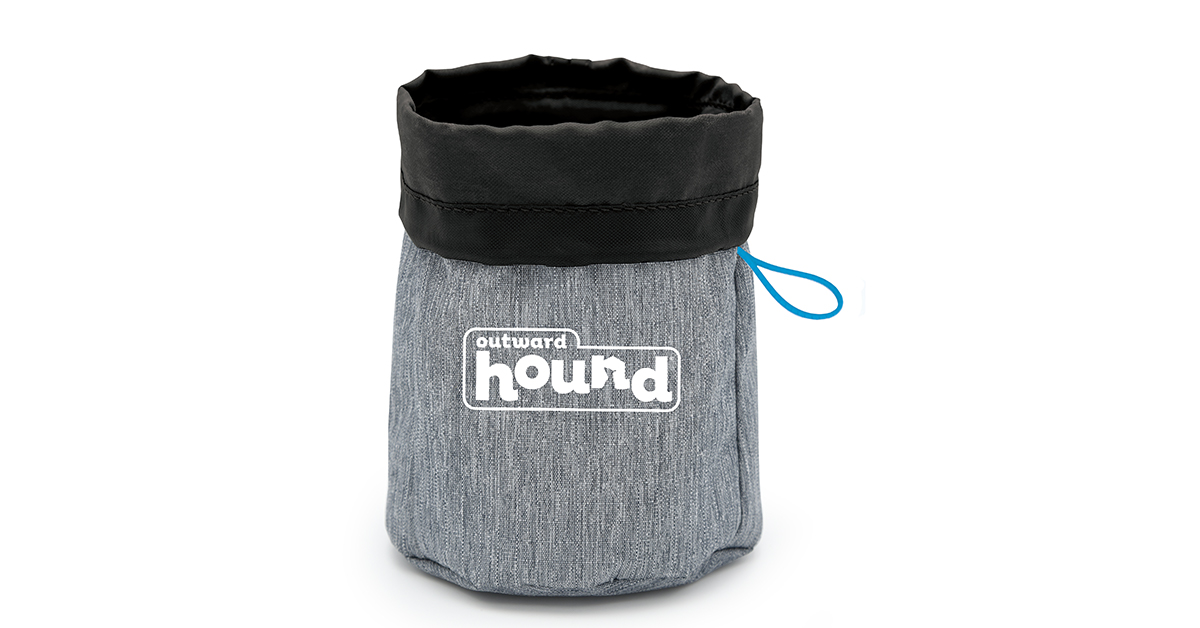
When getting started with teaching your puppy the following five basic commands, you’ll need a few essential dog training tools.
Here is a list of some things you might need for your training sessions:
- dog treat pouch
- high-value training treats (think boiled chicken, freeze-dried beef, or cheddar cheese)
- clicker
- doggie poop bag dispenser and waste bags in case of accidents
- dog toy if your pup isn’t food-motivated
- dog leash
A dog treat pouch with a belt clip or carabiner that attaches to your person is going to be one of the most helpful tools for you. A fanny pack works great as a training bag, too. A front pocket? Not so much. Unless you don’t mind getting the sticky treat smell stuck on your pants.
Hands-free treat pouches give you quick and easy access to the goodies your puppy desires for a job well done. The best dog pouches are machine washable and come with a drawstring, velcro, or magnetic closure to conveniently keep kibble in place when on the go.
The Outward Hound Treat Tote easily attaches to your waist belt or pants loop for quick access to your dog’s favorite treats while training your pup and teaching them new commands. When not used to store tasty treats, this handy dog pouch can also serve as a convenient storage space for training accessories such as a dog whistle or tennis ball while dog walking.
It also features a top drawstring that fastens to seal treats so they stay fresh and secure during playtime or training. Plus, it’s water-resistant to stay dry when your puppy salivates over what’s inside.
5 COMMANDS TO TEACH YOUR NEW PUPPY THAT WILL STRENGTHEN YOUR BOND
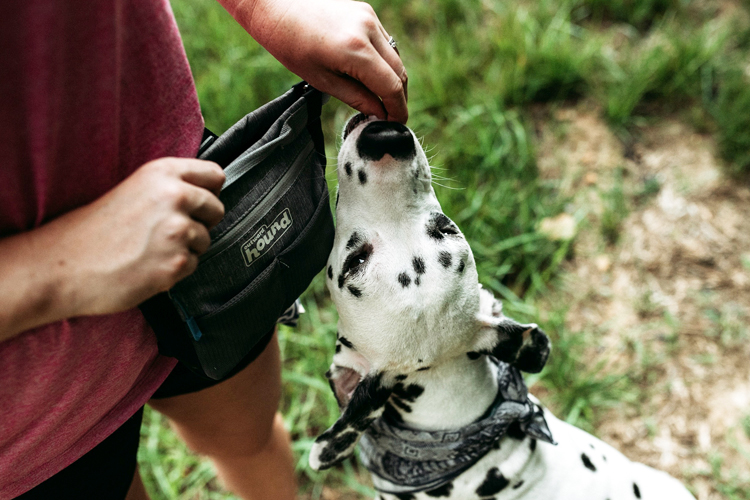
The five basic commands you should teach your new puppy first are:
- Sit
- Stay
- Heel
- Down
- Leave it
SIT
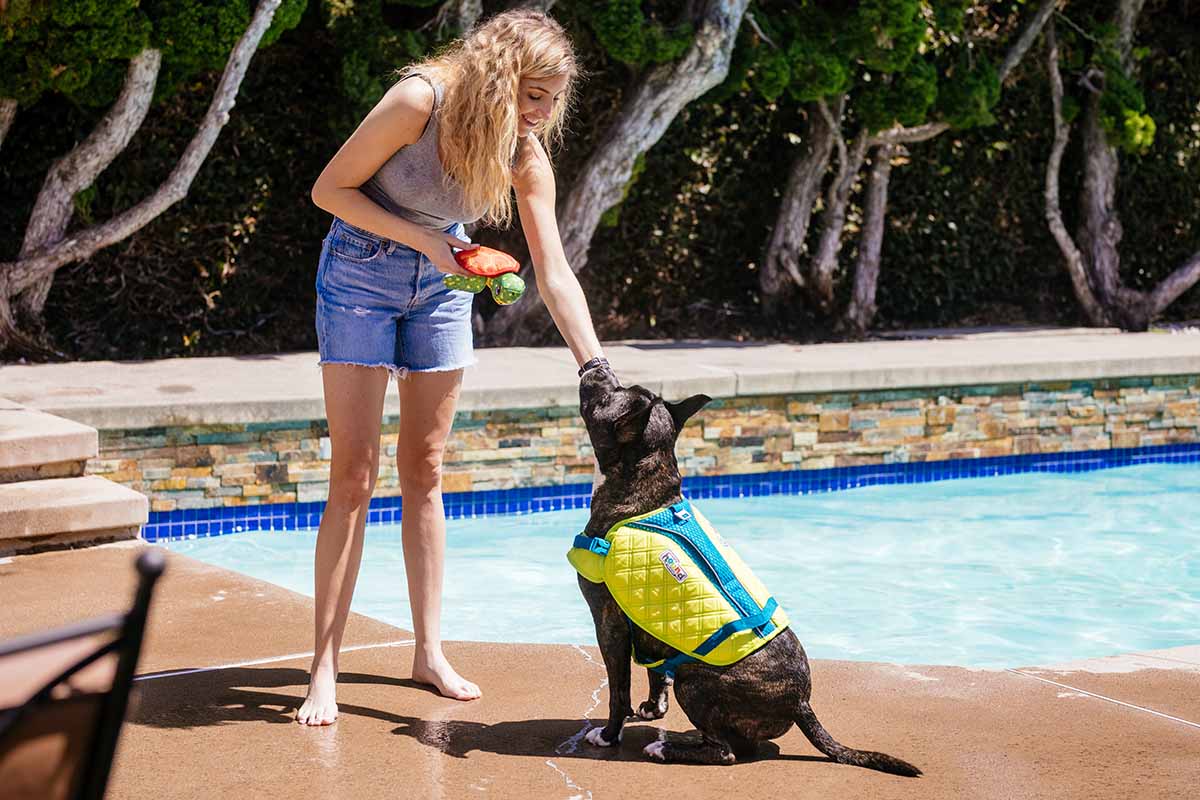
People appreciate well-behaved dogs who sit nicely for pets. It’s easier to pet them for one and they’re not likely to knock over Aunt Mabel when she comes to visit, either.
HOW-TO:
- Stand directly in front of your pooch and say “sit” in a clear and direct voice.
- With a lure (such as a high-value treat) move your hand over their head until they must sit to comfortably view the lure.
- Quickly reward the behavior by allowing them to have the lure. In order to “capture” the behavior we like, we need to dole out rapid rewards.
STAY
The American Kennel Club (AKC) calls “stay” a “duration behavior.” It’s a good command for your pup to know because life presents many “staying” opportunities. Imagine that you want to train him to sit and stay at street corners. With a bit of practice, you can have your pup waiting on your command before you cross the street.
HOW-TO:
- To begin, ask your dog to sit. Once in a seated position say “stay” in a clear and direct voice.
- Wait for a few seconds. Reach into your dog treat pouch and reward the behavior with a treat or clicker.
- Repeat these steps while gradually increasing the amount of time you ask your dog to “stay.”
HEEL
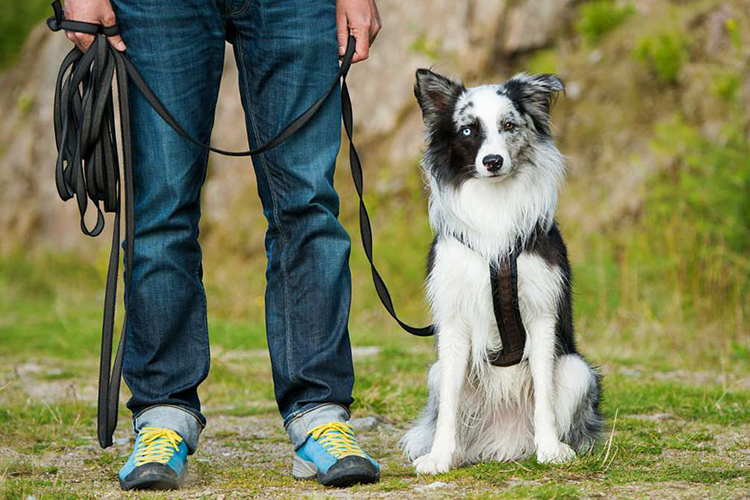
Walking on a leash is an essential skill. When you teach your dog to walk beside you then you can have an enjoyable walk. If your dog is straining ahead or keeps weaving in front of you like a Formula 1 race car driver, then your walk puts you both at risk for injury.
HOW-TO:
- Using treats as a lure, ask your pup to come to stand at your side.
- Once your pup is at your side, say “heel” in a clear and direct voice and reward with the lure and/or clicker.
- Once your dog has consistently mastered this step, challenge them by picking up the pace or walking in unpredictable directions.
DOWN

Ever have a pup who won’t stop jumping on someone? That’s no fun. When you teach your dog “down,” they’ll lie on the floor.
HOW-TO:
- Ask your puppy to “sit.”
- Using a treat as a lure, put the treat directly in front of your puppy’s nose and move it down toward the ground. This movement should leave the treat slightly ahead of your puppy so he must lay down to get it. If your puppy has a hard time with this, you can gently place a hand on its back to encourage it to lay down.
- Once your puppy has laid down, say “down” in a clear and direct voice and reward with the lure and/or clicker. Repeat these steps until your puppy consistently responds to “down” by laying down.
LEAVE IT
From your favorite shoes to silicone poop bag holders to dead rodents, dogs will put anything in their mouths. Part of this is just being a dog because they explore the world with their mouths. Yet, you don’t want them chewing your favorite shoes or dead rodents so teaching them the “leave it” command can get them to drop something before they destroy it.
HOW-TO:
- Use two separate treats for this exercise. Place one treat on the ground and cover it so that your puppy cannot get it, but can smell it. Keep the other treat in your hand.
- Your puppy will show interest in the covered treat. Once your puppy either looks away or walks away, reward with the treat in your hand and say “leave it” in a clear and direct voice.
- Repeat these steps until your puppy consistently responds to “leave it”. Increase difficulty by leaving a treat on the ground, uncovered.
Not only do these skills help your pup become a great family member but they can also prevent tragedy. For example, when dogs learn to look to you for guidance, they’re not likely to run into oncoming traffic no matter how attractive that squirrel is.
PUPPY TRAINING TIPS
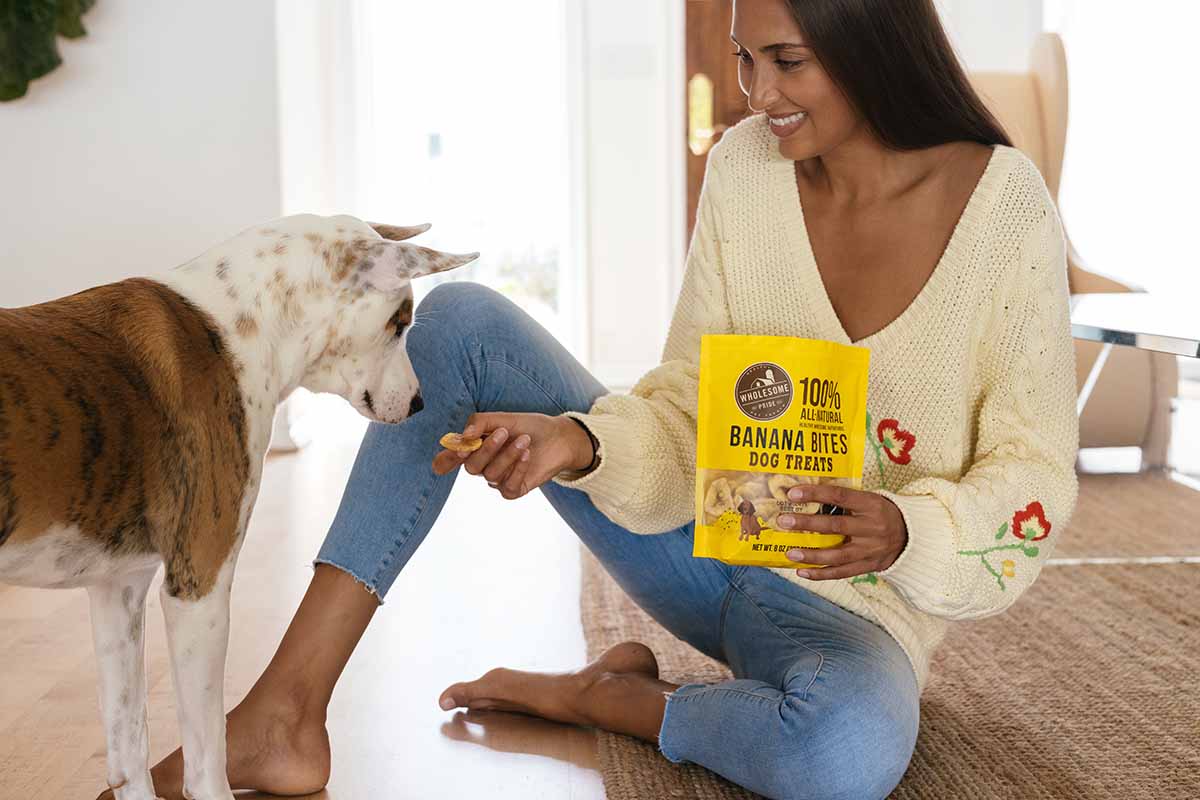
Patience, positive, and short. Let these three words guide your puppy training and tap into your pup’s natural tendency to want to please you. When you use an enthusiastic voice and say things like “good dog,” this is positive reinforcement that your pup craves.
Keep sessions short because puppies have short attention spans.
It’s better to do 5 minutes a day of training than 1 hour a week.
Fortunately, your small dog is predisposed to pay attention to you. If you need help, a puppy training class and/or dog trainer can help you with these basic commands to teach your new puppy.
Although you may have the majority of your day available to spend time with and train your new puppy, it is very important to make sure your puppy has time alone as well. Your puppy should have a crate in a quiet room where it can regularly spend some time alone. This is another very important thing to practice with your puppy so it is not a shock to them when you once again continue to spend more time outside of the home.
Well-mannered pups grow into well-mannered adults that you can take anywhere dogs are allowed.
